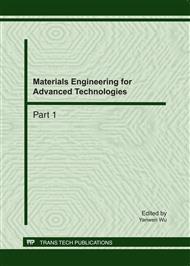p.986
p.993
p.998
p.1003
p.1008
p.1014
p.1018
p.1023
p.1028
Microscopic Simulation Modeling of En-Route Diversion Strategies for Commercial Vehicle Operations
Abstract:
Most routing decisions or diversion plans in the literature are made based on the current traffic situation and little attention is paid to future. Such kinds of greedy strategy consistently suggest en route diversion at any point where the alternative route choice is better than the ongoing one. Hence, in the constantly varying real world, excessive diversions may appear and are much likely to create a sort of ‘zig-zag’ effect, eventually leading to a higher cost. A forward-looking diversion strategy considering both real-time and future information is proposed in this paper, and the potential benefits, limitations and difficulties of several diversion strategies are evaluated through microscopic traffic simulations. The research will help logistics companies to assess the benefits of en route guidance system in their day-to-day operations.
Info:
Periodical:
Pages:
1008-1013
Citation:
Online since:
June 2011
Authors:
Price:
Сopyright:
© 2011 Trans Tech Publications Ltd. All Rights Reserved
Share:
Citation:


